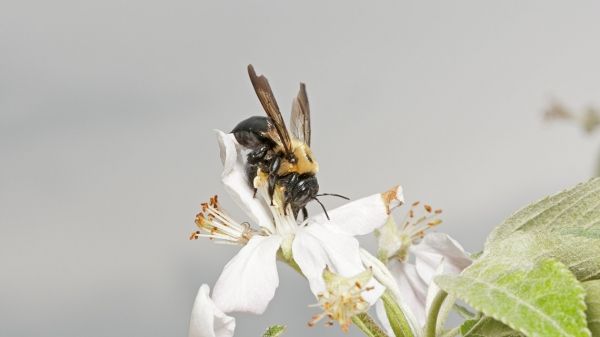A Cornell-led study, published Jan. 18 in the journal Science, shows that apple orchards surrounded by agricultural lands are visited by a less diverse collection of bee species than orchards surrounded by natural habitats.
In turn, apple production suffers when fewer, more closely-related species of bees pollinate an orchard. Production improves in orchards surrounded by natural habitats, which then draw a broader selection of species to apple blossoms.
The researchers examined 10 years of data from 27 New York state apple orchards; the study accounted for the types of landscapes that surround these orchards, measured apple production and surveyed the species of bees that visited each orchard.
The researchers also reconstructed the evolutionary history and relatedness of New York native bee species to better understand species patterns that played out across these orchard bee communities. This reconstruction is represented by a branching tree-like diagram of related species, called a phylogeny.
Continue reading at Cornell University.
Image via Cornell University.


